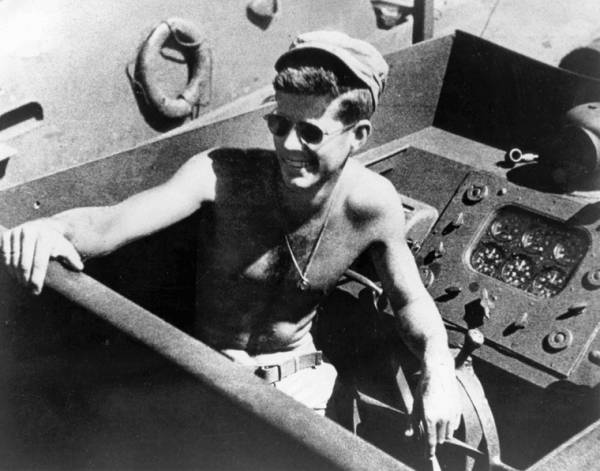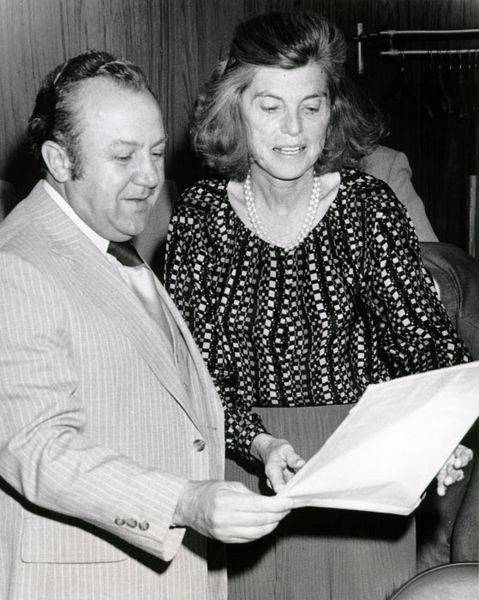Well, November 22 has come and gone once again, but this year the anniversary was more special than those previous. It has now been fifty years since the tragic assassination of U.S. President John F. Kennedy. It has become cliché among baby boomers that everybody knows where he or she was when the bad news was first heard. I was in my tenth-grade history class when our principal came over the PA and gave us the announcement just before noon on that Friday.
But Kennedy’s legacy didn’t just involve politics; he also influenced the world of physical fitness. Regardless of how one feels about the Kennedy family and their politics, we can all take a good look backwards and see what exactly JFK’s legacy is in regard to our various sporting activities.
The three presidents who preceded Kennedy in the White House were all of advanced years and did not seem to have any great concern with physical fitness. The polio-stricken Franklin D. Roosevelt was in a wheelchair during his White House years and the stress of the Depression and World War II undoubtedly contributed to his demise. Harry S. Truman was also advanced in years, but he kept in good shape for someone his age with his daily brisk walks. Apparently the press corps even had difficulty keeping up with him. Dwight D. Eisenhower was frequently criticized for what many regarded as excessive time spent on the links. But despite this, these presidents had little concern for the general physical fitness of the nation.
Kennedy came to office in 1960 as the youngest man ever elected to the post at the age of 43. Teddy Roosevelt was a year or so younger, but he was not elected in his first term, having succeeded the assassinated McKinley. So Kennedy certainly projected the unfamiliar aura of youth in American politics (an attractive and physically active wife didn’t hurt this image either). One of the goals of Kennedy’s administration was to increase the level of physical fitness all Americans. Due to his great interest in this area many just assumed that Kennedy was a fitness buff himself.
We now know that Kennedy’s enthusiasm was limited to the inspirational side. Due to several conditions, he was not able to take part in many strenuous physical activities. The press corps at the time went to great lengths to hide Kennedy’s physical frailties, just as they did with FDR three decades previously. We are all most likely familiar with the story of how Kennedy was injured in the South Pacific near the modern island nation of Nauru. During his recovery from back surgery he supposedly wrote Profiles in Courage (some doubt exists as to its precise authorship). His back would bother him for the rest of his life, necessitating the occasional use of crutches, which the press dutifully hid from the public. Even Strength and Health editor Bob Hoffman recommended some exercises for Kennedy to help alleviate the pain in his back. It is not known whether Kennedy ever followed Uncle Bob’s advice.
 In addition to the back problems Kennedy also suffered from Addison’s disease. This is a rare, chronic disorder in which the adrenal glands do not produce sufficient steroid hormones. This was not so well known by the public then or even now. Due to the effects of that disease, Kennedy had a difficult time gaining weight. He was always quite frail, scaling no more than 135 pounds on his six-foot height. He was able to put on some weight before the 1960 campaign, and with great difficulty he finally was able to approach 160 pounds. Pictures of Kennedy from his early congressional and senate years show him at times looking almost cadaverous. This is especially evident in his 1956 vice presidential bid.
In addition to the back problems Kennedy also suffered from Addison’s disease. This is a rare, chronic disorder in which the adrenal glands do not produce sufficient steroid hormones. This was not so well known by the public then or even now. Due to the effects of that disease, Kennedy had a difficult time gaining weight. He was always quite frail, scaling no more than 135 pounds on his six-foot height. He was able to put on some weight before the 1960 campaign, and with great difficulty he finally was able to approach 160 pounds. Pictures of Kennedy from his early congressional and senate years show him at times looking almost cadaverous. This is especially evident in his 1956 vice presidential bid.
While these conditions certainly prevented Kennedy from practicing what he preached in the area of fitness, we must not denigrate him for this situation. Time has now dulled the remorse shown by supporters and opponents alike that characterized the nation immediately after his death. As one would expect after the passing of half a century, a more balanced view can now emerge. I will leave that to the history professors, though. Regardless of our political judgments that we might make upon the man, I think it is most likely that Kennedy’s interest in physical fitness and his funding of various programs around it marked the beginning of the fitness boom in the United States and the Western world in general. Prior to the early 1960s, physical fitness was the province of cranks and other nonconformist types. People certainly played sports in their youth, but it was recognized that activity must come to an end upon leaving school or getting married. People just accepted the inevitability of decreased physical capability as they got older. The fact you could control your own physical fitness was not appreciated by many in those days.
While John F. Kennedy was not able to live up to his own encouragement to his fellow citizens, his brother Bobby was definitely more physically active. You may have heard or read the stories of the touch football games laid by the large Kennedy clan on their front lawn of Hyannisport. JFK’s other brother Ted fought weight problems all his life so I guess he might’ve had to play on the line sometimes and might’ve been able to be in the backfield other times, I don’t know.
 JFK’s sister Eunice has probably done just as much to encourage fitness among those whom are often ignored or forgotten. She was the lead founder of the Special Olympics, a competition organized for those with intellectual disabilities. “Special O’s,” as they’re called, have been organized in most communities and that in turn has helped those with other handicaps to organize games of similar concept. Eunice’s daughter Maria and Maria’s ex-husband Arnold Schwarzenegger are also heavily involved in this endeavor.
JFK’s sister Eunice has probably done just as much to encourage fitness among those whom are often ignored or forgotten. She was the lead founder of the Special Olympics, a competition organized for those with intellectual disabilities. “Special O’s,” as they’re called, have been organized in most communities and that in turn has helped those with other handicaps to organize games of similar concept. Eunice’s daughter Maria and Maria’s ex-husband Arnold Schwarzenegger are also heavily involved in this endeavor.
Regardless of his condition, John F. Kennedy and his early promotion of physical fitness was the spark that got the whole fitness movement going in the United States, and I believe my own country of Canada as well. The Canadian government released its Report On Fitness in 1961, so it is quite probable the authors were inspired by Kennedy (even though Prime Minister Diefenbaker at the time was somewhat at odds with JFK). In any case these actions would all make all forms of fitness activity respectable and would even make a lot of people guilty for not participating at some point. Fitness is very much on every citizen’s mind now and this was just not the case fifty or so years ago.
Although the two events have anything to do with one another, I think it’s ironic now that the island nearest to the site of Kennedy’s WWII injury would eventually become an independent nation and have a president who was a multiple weightlifting gold medal winner in the Commonwealth Games. Going into politics right after his retirement from lifting, Marcus Stephen had the unenviable job of trying to make Nauru’s transition from a resource-based economy (bird guano nitrates) to a more diversified one.
So while the television networks have saturated us with coverage of the fiftieth anniversary of the assassination, it behooves all of us in the sport and fitness communities to hearken back to the snowball that John Fitzgerald Kennedy got started in the early 1960s.
Photo 1 by Cecil W. Stoughon ([1]) [Public domain], via Wikimedia Commons.
Photo 2 by Unknown [Public domain], via Wikimedia Commons.
Photo 3 by Unknown [CC-BY-SA-3.0], via Wikimedia Commons.






